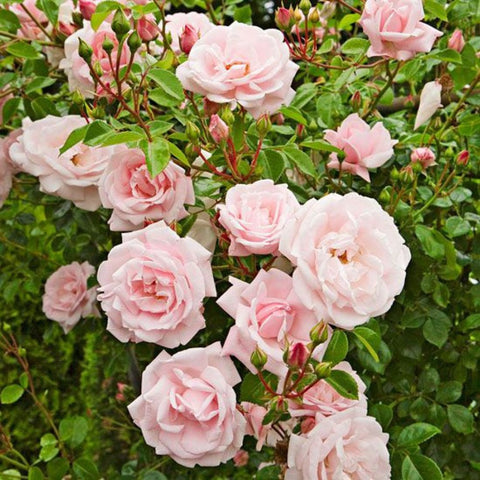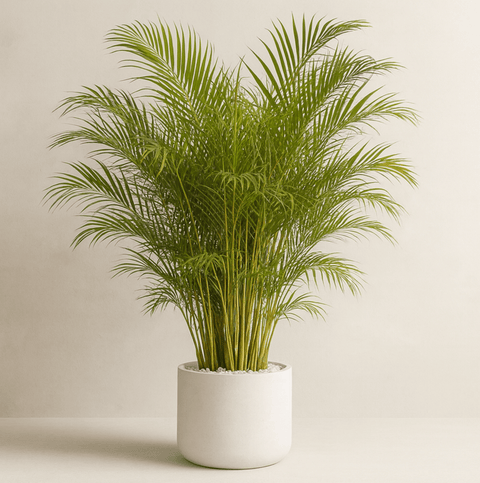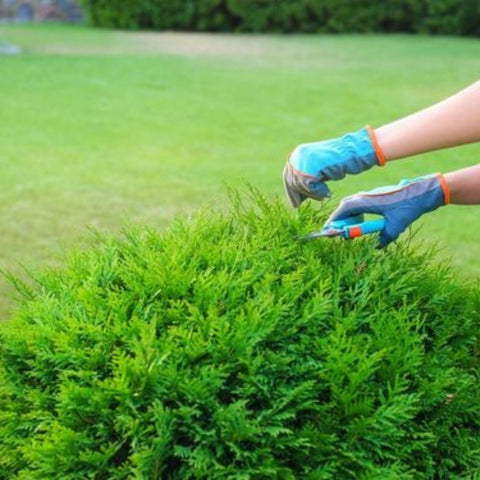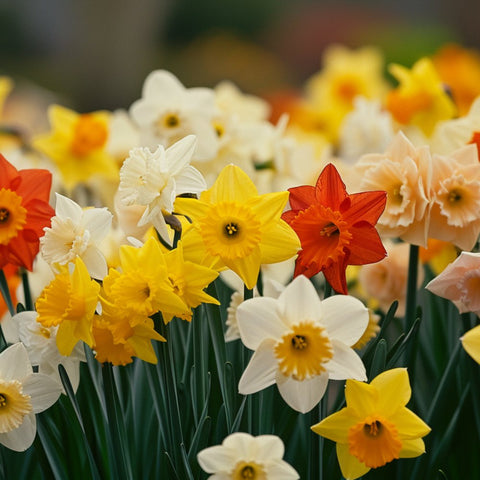Blog Post - Trimming Rose bushes in Spring
Welcome to our comprehensive guide on trimming rose bushes in spring! In this article, we'll dive deep into the importance of pruning roses, the tools and materials you'll need, the timing considerations, the proper techniques, and the aftercare to ensure your roses bloom beautifully all season long. Let's get started!
Why Trim Rose Bushes in Spring?

Trimming rose bushes in spring is crucial for their overall health and vigor. It encourages new growth, enhances the plant's appearance, and can even help prevent disease. By removing dead or damaged wood and shaping the bush, you create an optimal environment for vibrant blooms.
But the benefits don't end there! Pruning roses also allows for better air circulation, which reduces the risk of fungal infections. Additionally, a well-pruned rose bush is easier to maintain and provides easier access for watering and fertilizing. So, grab your gardening gloves and let's learn the ins and outs of rose pruning!
Tools and Materials Needed
Before we start, make sure you have the right tools at hand:
1. Secateurs

These handy shears are perfect for precise cuts, making them essential for trimming rose bushes.
2. Gardening Gloves

Protect your hands from thorns and scratches with a sturdy pair of gloves. Choose ones with good grip for increased safety.
3. Loppers

For thicker branches, loppers provide better leverage and cutting power than regular shears.
4. Pruning Saw

A pruning saw is necessary for larger branches that cannot be easily cut with secateurs or loppers.
5. Disinfectant

Keep your tools clean and prevent the spread of diseases by disinfecting them between cuts.
6. Safety Goggles

Protecting your eyes is essential when pruning, especially when working with thorny rose bushes.
Timing of Rose Pruning
Spring is considered the ideal time for trimming rose bushes for several reasons. First, it's before the active growth period, allowing the plant to recover quickly. Second, it promotes robust spring blooms by removing old, unproductive canes.
However, the timing may vary depending on your climate and region. In colder areas, it's best to wait until the last frost has passed. In warmer regions, pruning can be done earlier. Monitor the weather and adjust your pruning schedule accordingly.
Preparing for Pruning
Once you've determined the optimal time for pruning, follow these steps to prepare:
1. Removing Dead or Diseased Wood
Inspect your rose bush and remove any dead or diseased wood. This helps prevent the spread of infection and creates space for healthy new growth.
2. Cleaning and Sterilizing Tools
Before you begin pruning, clean your tools thoroughly and sterilize them with a disinfectant. This step prevents the spread of diseases between plants.
3. Wearing Appropriate Protective Gear
Don't forget to wear protective gear such as gloves and safety goggles to prevent injuries from thorns and flying debris.
Pruning Techniques
Now that you're geared up and ready to prune, let's go over some essential techniques:
1. Removing Damaged, Dead, or Weak Canes
Start by removing any canes that are damaged, dead, or weak. These canes are unlikely to produce new growth and may hinder the plant's overall health.
2. Determining the Proper Height to Trim
When deciding on the height to trim your rose bush, aim to remove one-third of the overall height. This encourages new growth and helps maintain a balanced shape.
3. Creating an Open-Centered Shape
An open-centered shape allows for better airflow and sunlight penetration, reducing the risk of fungal infections. To achieve this shape, remove any canes that cross or grow inward towards the center of the bush.
4. Promoting Air Circulation Within the Bush
Thin out the remaining canes to create space between them. This promotes better air circulation and reduces the risk of diseases like blackspot.
5. Encouraging New Growth
Lastly, prune about a quarter inch above an outward-facing bud or node to encourage new growth in the direction you desire.
Steps for Pruning
1. Removing Any Suckers or Growth from the Base
Before you start pruning the main canes, remove any suckers or unwanted growth emerging from the base of the rose bush. These can drain energy from the plant and should be eliminated.
2. Cutting Back to a Healthy Bud or Outward-Facing Node
When pruning the main canes, make clean cuts at a 45-degree angle just above a healthy bud or outward-facing node. This angle promotes proper healing and reduces the risk of water accumulation.
3. Making Clean Cuts at a 45-Degree Angle
Always ensure your cuts are clean and angled to prevent damage and disease. Avoid leaving stubs or making ragged cuts that may invite infections.
4. Clearing Away the Trimmed Debris
As you prune, clear away the trimmed debris to avoid attracting pests or diseases. Dispose of the debris properly or add it to your compost pile.
After Pruning Care
Once you've finished pruning, give your roses some special care:
1. Applying Fertilizer and Mulching
Apply a balanced rose fertilizer around the base of the plant and mulch to help retain moisture and provide nutrients as the roses regrow.
2. Watering Properly After Trimming
Water your trimmed rose bushes deeply but avoid overwatering. Keep the soil consistently moist, but not waterlogged, to aid in the healing and regrowth process.
3. Monitoring the Bushes for Signs of Regrowth
Keep a close eye on your pruned roses for signs of new growth. If you notice any issues such as wilting or yellowing leaves, address them promptly to ensure the health of your plants.
Common Mistakes to Avoid
While pruning your roses, be mindful of these common mistakes:
1. Over-Pruning and Weakening the Plant
Avoid over-pruning, as this can weaken the plant and reduce its ability to produce healthy blooms. Stick to the recommended one-third rule when determining how much to trim.
2. Ignoring Disinfection of Tools
Always disinfect your pruning tools between cuts to prevent the spread of diseases. Neglecting this step can lead to the contamination of healthy canes and compromise the overall health of your roses.
3. Neglecting to Clean up Trimmed Debris
To prevent pests and disease, it's crucial to clear away trimmed debris promptly. Leaving it on the ground can attract insects and provide a breeding ground for fungal infections.
Conclusion
There you have it – a comprehensive guide to trimming rose bushes in spring! By following the proper techniques and taking the necessary precautions, you can maintain healthy and vibrant roses throughout the season. Remember to prune at the right time, use the correct tools, and provide post-pruning care to ensure the best results. Happy pruning, and enjoy the beauty of your flourishing rose bushes!























Comments (0)
There are no comments for this article. Be the first one to leave a message!